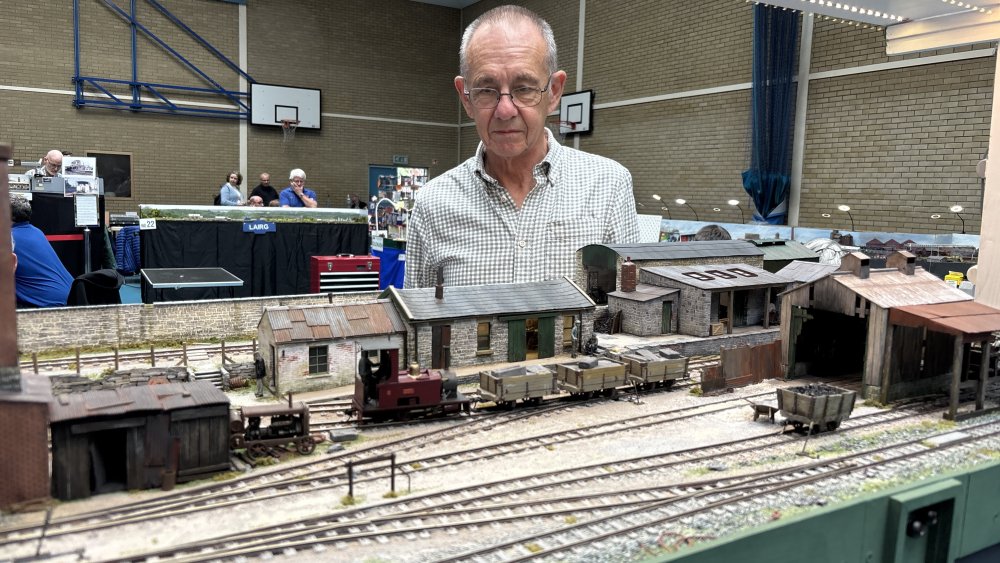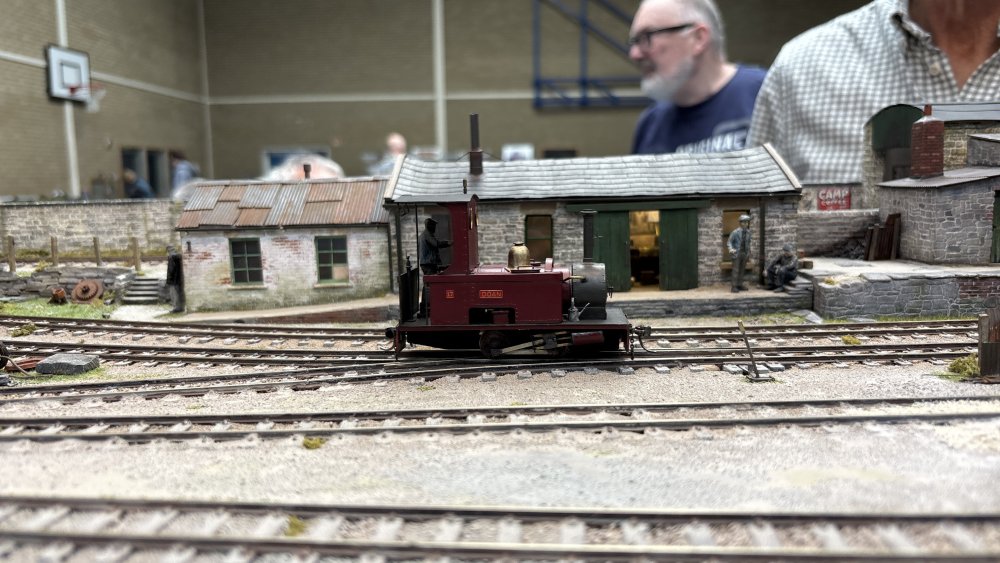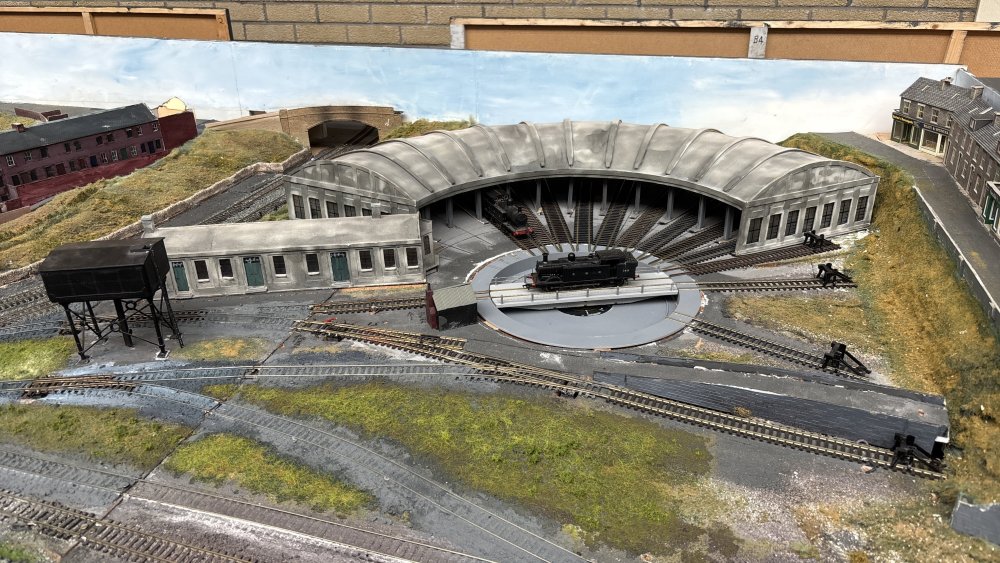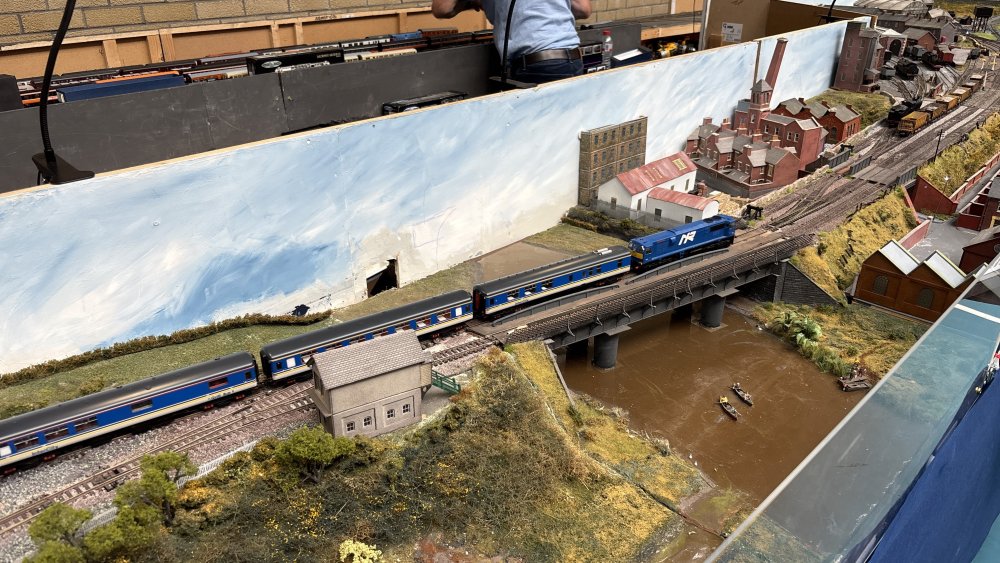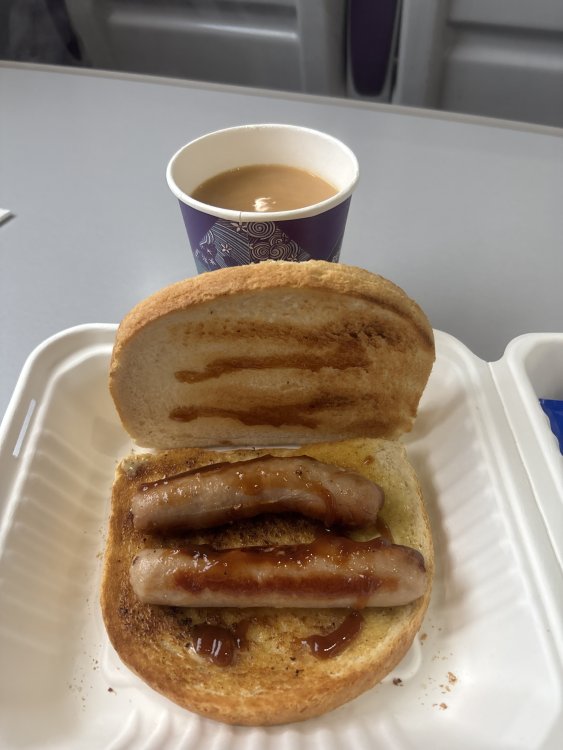
Mol_PMB
Members-
Posts
2,336 -
Joined
-
Last visited
-
Days Won
132
Content Type
Profiles
Forums
Events
Gallery
Everything posted by Mol_PMB
-
HOW Much? Wow! Does it come with radio control, working lights and a sound chip?
-
A whistle-stop visit from me this morning. It was great to meet Alan and Kieran and see the superbly detailed ‘Stone Yard’. The Portadown layout was also very impressive. I liked the continental trams layout too, with the working bicycles. Sorry to those I missed speaking with as I rushed round - Popeye’s buildings looked excellent. I’m heading off to Derry for this afternoon. Paul
-
Narrow Gauge in the Rockies not quite
Mol_PMB replied to Mayner's topic in US / Canadian Railway Modelling
That’s an impressive train, and very interesting info too. Thanks! -
I’ve just had a walk round the People’s Park and thought that was very pleasant. I’d best get writing a generous review on Tripadvisor… the rest of the town was closed of course. Anyway, I’m heading back to Belfast now and looking forward to seeing the model version of Portadown this afternoon.
-
The catering staff weren’t confident in their ability to serve a full breakfast before Portadown (apparently first class was unusually busy) but produced me a sausage toastie and a cup of tea very quickly. Not officially on the menu but just what I needed. The £10 go-anywhere Sunday ticket is also a superb deal.
-
Now then DJD, where’s that can of white paint and NIR logo stencils you promised me? 216 at Grand Central on the 0805 this morning: I must say this is an impressive station.
-
Think you made the right choice - Downpatrick was superb. Hopefully I can do both with the exhibition tomorrow as well.
-
Where do you get your etched works / loco nameplates from?
Mol_PMB replied to Jamie Davis's topic in Irish Models
Etched nameplates are very small and flat, would fit easily in a letter. Get them sent to a friend/relative/fellow forum member in the UK first? -
Thanks - nice to see the pic and hopefully I’ll see them in the flash tomorrow. Is there much Irish stock on the trade stands at the show?
-
Last I saw they were ordering fish and chips, hopefully a pint or two to come after that!
-
124 worked both freight and passenger. A39, 146, G617, the Wickham inspection car and thumper 458 were also in action. A busy day, and all went very well.
- 170 replies
-
- 10
-

-

-
- 170 replies
-
- 11
-

-

-

-
-
Seems like everywhere is running this weekend! I’m already committed up north but would love to visit Maam Cross one day. I hope it all goes well.
-
"Voiding the Warranty" - Mol's experiments in 21mm gauge
Mol_PMB replied to Mol_PMB's topic in Irish Models
Modelling progress will have to wait until I’m home again next week! I sailed from Birkenhead to Belfast last night and today I spent the morning in Whitehead and the afternoon in Cultra. Having checked into my accommodation I had a swift pint in the Crown and now trying out a few other pubs and bars in the area. I won’t be out late as I’m knackered, and I’m off to Downpatrick in the morning. I’m planning to catch up with @flange lubricator tomorrow and I expect a few other forum members will be at Downpatrick too? Having completed my wagon measurements at Cultra today, I now have Sunday free, so I’ll go to the Belfast model railway exhibition to say hello to @Tullygrainey and maybe I’ll buy some more toy trains? Also on Sunday perhaps take a train trip somewhere - Derry appeals if I can fit it in. I think that last time I went there it was behind a pair of baby GMs! I’ve done it by 80 class too. Back home on Monday on the daytime ferry. -
You mean it’s not hauling the 1645 departure from Downpatrick tomorrow afternoon? What a swiz!
-
Thanks. I was trying to avoid missing something crucial, as it’s a long way from home. Also to make it quicker when I was actually at the museum. I made the sketch based on photos and then drew on all the dimensions I wanted. I still added a few more when I had the real thing in front of me. I have also taken lots of photos from odd angles. In due course I will turn this into a proper scale drawing and then backdate it with planked sides based on old photos. Then I’ll have to decide whether to do a custom etch for it, or see if someone is interested in 3D printing it.
-
-
So, DJD, you should be encouraging me to buy Hunslets not Badgers! But many thanks for offering your second kidney. Are you sure you can spare it after you sold the first one?
-
Looking for drawings / diagrams GSR 101 class
Mol_PMB replied to Jamie Davis's topic in General Chat
The tome ‘Locomotives of the GS&WR’ also contains several loco diagrams for the class, and some dimensions. However, the RPSi books mentioned above are probably a better bet for this particular class. -
Looking for drawings / diagrams GSR 101 class
Mol_PMB replied to Jamie Davis's topic in General Chat
I’d say the book ‘Steaming in Three Centuries’ would be a good starting point, to understand the many variations of boiler, frames, wheels, cab, tender etc in this large class. It contains several scale drawings of different variants, though these are modellers’ drawings not full-size manufacturing drawings. I imagine that some manufacturers’ drawings may still exist in their own archives (wherever they have ended up), you’re probably less likely to find Inchicore drawings. The RPSI might also be a good source of info. I imagine they have some drawings, but helping modellers isn’t their core business so you might have to build some relationships there rather than just jumping in with ‘I Need xyz’. -
Very nice indeed! I look forward to building a couple of those vans myself. Regarding decals, the SSM ones are a bit translucent so tend to lose their colour on a dark background. In this case they need a white layer under the orange. Railtec are much better in that regard.
-
For me, the Hunslets and the 800s have much less appeal than the C class (I have ordered a Hunslet though). There were only 3 of each and they had a very restricted operational range, both in geography and time. The C class, if we include the MV class and the preserved examples, cover 70 years, there were over ten times as many of them, and a dozen different liveries. During the course of their lives they worked all over Ireland - Valentia Harbour - Ballina - Derry - Bangor - Howth - Rosslare - Dungarvan - Youghal - Skibbereen and everywhere in between. Surely these would sell? And a lot of the complex shape and details have already been worked out for the A class models. The mechanism and bogies could be closely based on the Hunslets. Not immediately, for sure, but I really hope they do appear. Sign me up for at least 4 of them.
- 334 replies
-
- 10
-

-

.png.c363cdf5c3fb7955cd92a55eb6dbbae0.png)

